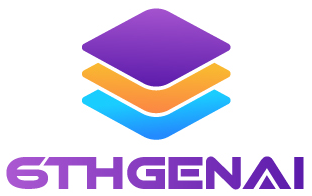In simple terms, Amazon Lex is a new service that allows developers to build chatbots that can communicate through voice and text. Whether you’re developing a customer support bot, an online store, or a company assistant, Amazon Lex provides a complete and scalable solution integrated with AWS services. In this blog, we shall analyze Amazon Lex in depth considering its components and constituent parts, pricing dimensions, use case scenarios including generative AI features and their applications in real time.
What is Amazon Lex?
Amazon Lex is an advanced chatting and talking interactive voices powered by the natural language understanding and automatic speech recognition technology as that of the Amazon Alexa. So, you see, Lex does the speech to text transformations, and it also has NLU in the core system which understands the user intents making it possible to have a conversation with interactivity.
Main Components of Amazon Lex
When it comes to Amazon Lex’s workings, such let us understand its using components:
Intents: Denote the task or purpose of a user. A good example would be a flight booking bot which has got intents such as ‘Book Airport Flight’ or ‘Check Flight Status.’
Utterances: Variable speeches by a user that carry the meaning of an intent. This may be phrases such as: “I am looking for a flight going to New York City” or “Request for the status of my flight,” which may activate those intents.
Slots: Variables that assist in carrying out an intent. For instance, in the course of booking a flight, the slots will include such details as – origin city, arrival city, and travel date.
Fulfillment: The step completed when Lex obtained all required data. Fulfillment often occurs through the AWS Lambda service, which allows the execution of the business logic such as confirming the customer’s order or checking the balance of the customer’s account.
Prompts: Prompts are also used in Lex to request for certain information that is missing from the user. For instance, if the user wants to book a flight but does not indicate where to, Lex may say, “Where do you wish to book a flight to?”
Integration of Generative AI: With the addition of AWS Bedrock, Lex can incorporate models tailored for generative AI to power conversations, making it much more responsive and relevant to the interplay of the conversation with users.
Examples of Functionality and Use Cases
Lex by Amazon is not only extremely beneficial in making the communications interactive in the customers’ interest, but also effective in enhancing the regular processes of business by introducing the respective solutions in many spheres. Such are the below mentioned cases in point.
1. Chatbots for Customer Support
Although Amazon Lex is designed primarily for creating chatbots, many organizations have, incorporate it into their daily operations as a customer service chatbot. One instance is that of a telecoms company that provides Lex to address billing questions, thus allowing for self-service options.
Example: Suppose the user wants to know, “What is the current bill?” Lex identifies the customer id from the discussions and passes it to the Lambda function, which fetches the value from the billing system and returns it to the customer in less than a second.
2. Virtual Assistants
Schedule management, reminders, and helpdesk-related tasks have been streamlined with the introduction of Lex-powered assistants in organizations. For instance, Lex can take a meeting in response to “Book a meeting on Thursday next week at 10 AM with John” by accessing the calendars and task managers.
Example: A virtual assistant chatbot that organizes meetings and reminders for the users and updates them accordingly in real-time.
3. E-Commerce Chatbots
Such lex and similar technologies have been deployed by the retailers to enhance product recommendations, order income and payment realization. A Lex-based chatbot could assist customers in product search, reviews, and checkout.
Example: A user requests, “Find me the new iPhone models that cost below $800.” Lex leverages the slots to understand the request and fetches the relevant items from the client catalog based on product, pricing and brand criteria.
4. Amazon Connect Integration for Call Centers Lex offers Intelligent call distribution along with automated self-service options, integrating into Amazon Connect, AWS’s cloud contact centre service. For instance, after a customer call is connected, Lex can interact with the caller to understand the purpose of the call and therefore transfer the information to an agent.
For instance, a user makes a call in order to change a password. Lex gathers all the details (i.e. account name, email) and forwards it to a live agent only when the bot is unable to assist in resolving the issue.
Building Conversational Experience with Amazon Lex
Amazon Lex and conversational AI behind the chatbots are also rooted in the models provided by AWS Bedrock, hence they use machine learning to make the plots of the conversations richer and far better. Generative AI helps chatbots to make straighforward interactions more engaging and realistic instead of sticking to the scripts only.
For example:
A customer service robot designed to give specific answers to each of the users as well as help him/her solve a problem by creating a response of contextual relevance.
Alternatively, in the health care sector, a lexbot utilizing generative artificial intelligence can respond to patients’ queries regarding the symptoms or treatments of various illnesses in real-time, thereby easing the burden on the human staff.
This results in more engaging dialogues and enables chatbots to handle a larger number of situations that former because of their complexity would require extensive non-visual programming.
Pricing for Amazon Lex
Amazon Lex uses a pay-as-you-go pricing model, making it cost-effective for businesses of all sizes. You are charged based on the number of requests processed, which includes both voice and text interactions.
Text Requests: You are charged for each text request sent to your bot. For example, if your bot handles 10,000 text interactions in a month, you pay based on the total number of requests.
Voice Requests: Voice interactions cost more due to the additional ASR processing required to convert speech to text.
Free Tier: AWS offers a free tier for Amazon Lex, which includes 10,000 text requests and 5,000 voice requests per month for the first year. This is beneficial for developers who want to prototype and test their chatbots without incurring significant costs.
Example Pricing Breakdown:
Text requests: $0.004 per request
Voice requests: $0.075 per request (depends on the duration of the interaction)
For example, a chatbot handling 50,000 text requests and 10,000 voice requests in a month would be billed approximately as follows:
50,000 text requests: 50,000 × $0.004 = $200
10,000 voice requests: 10,000 × $0.075 = $750
Total: $950
Advanced Use Cases: Real-Time Conversational AI
Amazon Lex does not restrict itself to just question and answer bots; rather it can be scaled up to manage complex conversational processes within various verticals.
Healthcare: Chatbots powered by lex can enhance patient engagement in real-time by booking appointments, responding to medical inquiries and even administering symptom checkers. For instance, Lex which is connected with the medical databases could readily answer a query on “what are the symptoms of flu?”
Banking and Financial Services: Lex allows such things as as balance checks and fund transfer making such transactions safe. By utilizing APIs and Lambda, Lex can assist a user in saying,’ transfer $500 from my savings to checking account.’
Retail: The likes of Lex are for e-commerce sites, allowing them to enhance customer experiences such that one can easily ‘talk’ to the site in order to get products or even check order status. For instance, one may say, ‘Track my most recent order,’ and then Lex does the rest by relaying the information and the status as it goes on.
How to Build an Amazon Lex Bot: In-Depth Example
Let’s look at a detailed step-by-step process of building a real-world bot:
Define the Bot:
Start by defining the bot’s basic information (name, language, voice) in the Lex console.
Create Intents:
For example, a travel booking chatbot may have intents like “Book Flight” and “Cancel Booking.” For each intent, define sample utterances like “I want to book a flight” or “Cancel my reservation.”
Add Slots:
For the “Book Flight” intent, define slots for departure city, destination, date, and seat preference. Lex will automatically prompt the user for missing information.
Lambda Fulfillment:
Create a Lambda function that handles the backend logic for booking flights or fetching flight information. For instance, after collecting all slots, the function can call an API to process the booking.
Testing:
Test the bot in the Lex console or deploy it in a real-world application like Facebook Messenger or a website.
Deployment:
Once your bot is ready, deploy it on multiple channels, such as your website, mobile app, or Amazon Connect for voice interactions.
Conclusion
Chatbots come in various forms and Amazon Lex aims to make the creation of every type of chatbot easy. Businesses from diverse sectors, be it the hospitality industry or e-commerce would Incorporated lex into their strategies and explored its potential. Owing to its extensive integration within the AWS framework, its competitive pricing, and the provision of generative AI, Lex is expected to perform beyond simple textual bots to more sophisticated voice integrated systems. Whether you are designing an FAQ bot, a virtual assistant or a customer support agent with real time interaction, Lex offers the means to develop smart scalable chatbots in a short period of time.
- By admin





